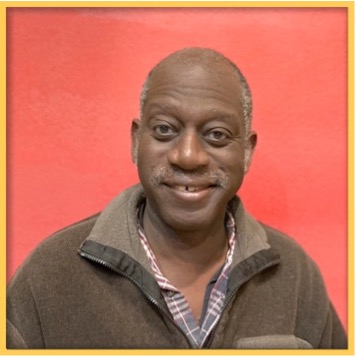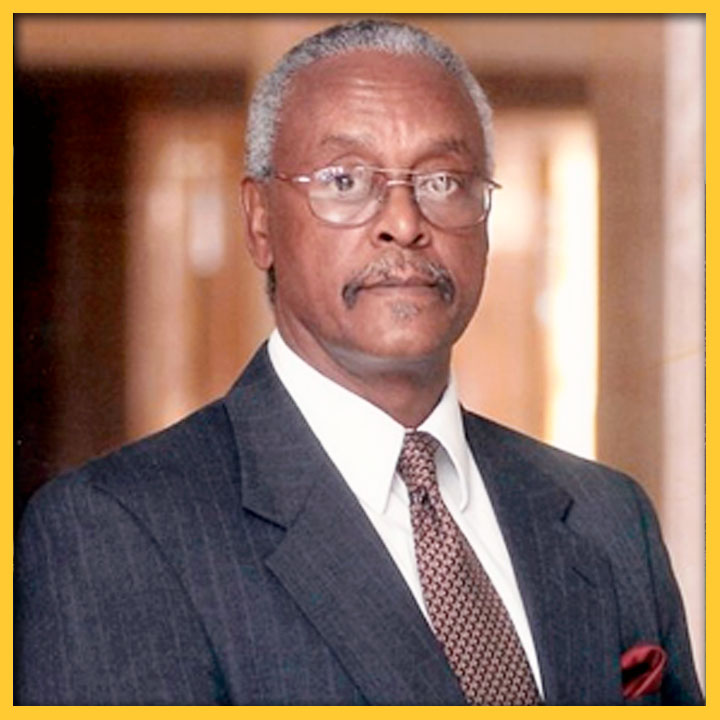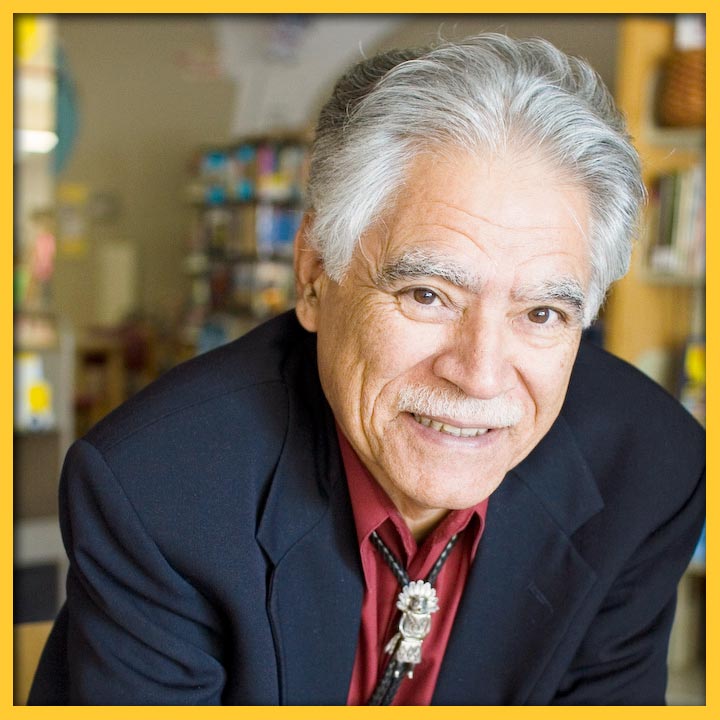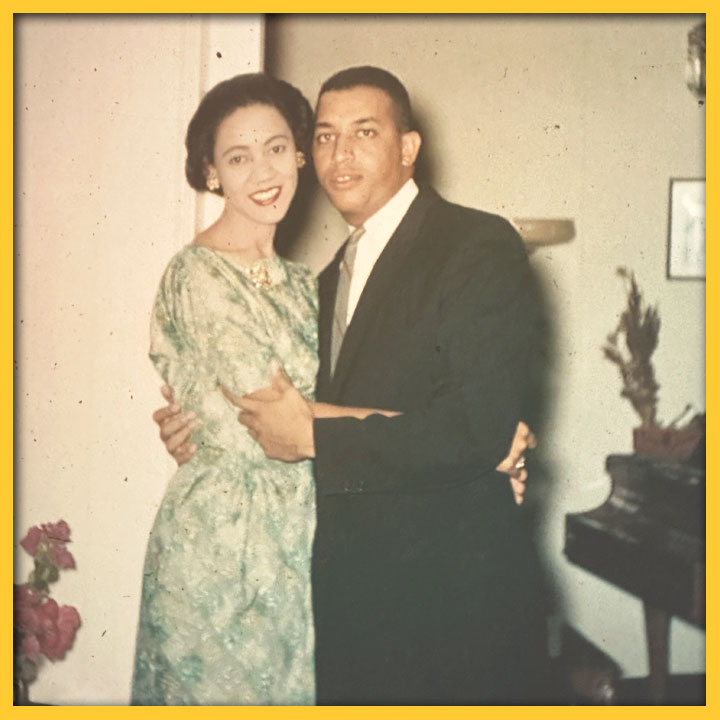
ENCOUNTERING NEW MEXICO
I was aware that New Mexico was heavily Indigenous and Hispanic. It did not lack people of color. But I soon learned I was not completely mistaken in immediately worrying how race was constructed here, in terms of post-colonial oppression, and whether the absence of blackness might mean the preeminence of whiteness.
PHOTO CAPTION: Darryl Lorenzo Wellington.
SHARE:
This nation’s greatest commentator on race relations, James Baldwin, never visited New Mexico (as far as my research can tell).
But Baldwin published an essay in 1953 describing his experience living in a Swiss village among people who had probably never even seen anyone Black. Nevertheless, he chided them, blackness indelibly touched their patch of land. Their reality in toto — despite ostensible appearances — wasn’t white. Although the essay was titled “Stranger in the Village,” Blacks were not strangers anywhere. “The world is white no longer and it will never be white again” he concluded.
And his description applies here, there and everywhere — and it certainly applies to New Mexico.
I arrived in Santa Fe, N.M., 11 years ago, riding the Greyhound, leaving behind South Carolina, a state with over a million African-Americans. In fact, in Charleston, S.C., where I lived, African-Americans were at one time the majority. A slow, painful process of gentrification gradually pushed Blacks to the outskirts, a tragedy which hastened my departure. But the place where I was going had no knowledge of this history, or my local reference points. I was relocating to a state — and I was aware of it — where Black Americans were less than 3 percent of the population. And they had never made a large demographic footprint.
I was introduced to my residence, with a sense of equal parts awe and shock, as the Greyhound wound in between mountain views. The craggy surfaces reminded me of projections of craters on other planets. The terrain was crowned with its own strangely minimalistic majesty — so unlike the lushly tropical South that I imagined this could be the land that time forgot. Yet the New Mexico mountains were also topped by several seasons simultaneously visible; there were green trees, fall leaves and lingering snow. I had never seen such scenes because this was truly my first journey Westward.
Given my racial sensitivities, and my sense of poetic metaphor that was galvanized reading by Toni Morrison’s Whiteness in the Literary Imagination, the stark, bright snow increased my vague concerns, considering whiteness vis-à-vis blackness. How was this Black stranger, newcomer, or loner going to be understood? How was my history going to interpreted here? How was I going to be recognized in this so-called Tri-Cultural state?
I was aware that New Mexico was heavily Indigenous and Hispanic. It did not lack people of color. But I soon learned I was not completely mistaken in immediately worrying how race was construed and constructed here, in terms of post-colonial oppression, and whether the absence of blackness might mean the preeminence of whiteness. New Mexico possessed its own often very violent history of minority identities being colonialized and devalued. It is a complicated story of genocidal wars, Manifest Destiny, land grabs and psychological colonization whose twistedness has been represented by this oft-cited quote from a speech by politician Antonio Lucero in 1915. The politician jumps hoops denying New Mexico has a mixed heritage. His fantasy makes New Mexico 100 percent white.
If there is a trace of Indian among us, it is so slight and so rare as to prove the exception rather than the rule. We are not only Caucasians, but we belong to that branch of the white race, the Aryan, which more than all other has made the history of the world…
Antonio Lucero didn’t appreciate that James Baldwin’s insight was already true in 1915.
And he wouldn’t have understood why Baldwin’s words comforted me as I arrived in Santa Fe, N.M., on the Greyhound, knowing nobody, in a place where I could go weeks without seeing a Black face.
In fact, New Mexico brought home the full meaning of Baldwin’s insight. Like him, I may have been the stranger in the village. But Baldwin notes in his essay that despite never having met an African, the Swiss had no shortage of ideas about them. These included silly, obtuse, affectionate, naïve or racist ideas that mirrored them to themselves. The unseen African diaspora loomed large in their imaginations, and the ramifications touched them in an intimate place: their consciousness. It was indelibly altered.
Noting this, I want to take issue with the notion that Blacks or Africans have no place in New Mexico. Or that the small Black populace means we have no history here. I can name Blacks who have made contributions to New Mexico history, beginning with Esteban de Dorantes, the African-born adventurer who ironically became the first of the Spanish conquerors to arrive here. I can name archaeologist George McJunkin, or speak of the Buffalo Soldiers. But I mean more than this.
I mean that blackness has already conceptually altered every nook and cranny of Western civilization, and specifically in the USA, where there is no place that has not been impacted by, imitated, or borrowed from Blues, Jazz, the Civil Rights tradition, and sacred and secular Black rhetoric.
Perhaps Native Americans represent America’s first confrontation with its capacity for injustice, while Blacks represent its confrontation with the construction of race. Studying New Mexico’s history of colonialism and racism and how race has been constructed here cannot be separated from stereotypical and dehumanizing notions of blackness. The urge to create a falsely white identity is always related to fear, jealousy, ambivalence and fascination with blackness. Always. That is why the Black presence is predetermined. I can’t be called a stranger. Black and New Mexican, I am recognized wherever I go. I belong to New Mexico’s past, present and future.

This column was funded in part by a generous grant from the McCune Foundation.
PASA POR AQUÍ
ADDITIONAL BLOG ARTICLES

REFLECTIONS ON THE LOSS OF A NEW MEXICO CIVIL RIGHTS LEADER
By Carlyn N. Pinkins, M. A.
“The Dr. Harold Baileys of the world should inspire us all to do what we can to leave our communities, our towns and cities – our great state – better places than we found them. While we do our part to create the Dr. Harold Baileys of the future, we should also strive to make sure that the Dr. Harold Baileys of our past and present are never forgotten.”

RUDOLFO ANAYA: CATCHING CULTURES IN BLESS ME, ULTIMA
By Richard Wayne Etulain
Anaya greatly expands the cultural contributions of his novel by combining the usual (Bildungsroman—growing up theme) with the unusual (complex, diverse New Mexico Hispanic culture)…

UP BY OUR BOOTSTRAPS; TWO LIVES IN RETROSPECT
By Finnie Coleman
I found myself fascinated with Dr. McIver’s transition from the stultifying hopelessness of the Segregation Era to the wistful hopefulness of the Civil Rights Era…
SHARE:
DISCLAIMER:
Any views, findings, conclusions or recommendations expressed in this blog post/article does not necessarily represent those of the New Mexico Humanities Council or the National Endowment for the Humanities.
ABOUT THE AUTHOR:

DARRYL WELLINGTON
Darryl Lorenzo Wellington is 2021-2023 Poet Laureate of Santa Fe, N.M. He is also a speaker/presenter in Speakers Bureau program, who lectures on Black poetry.
